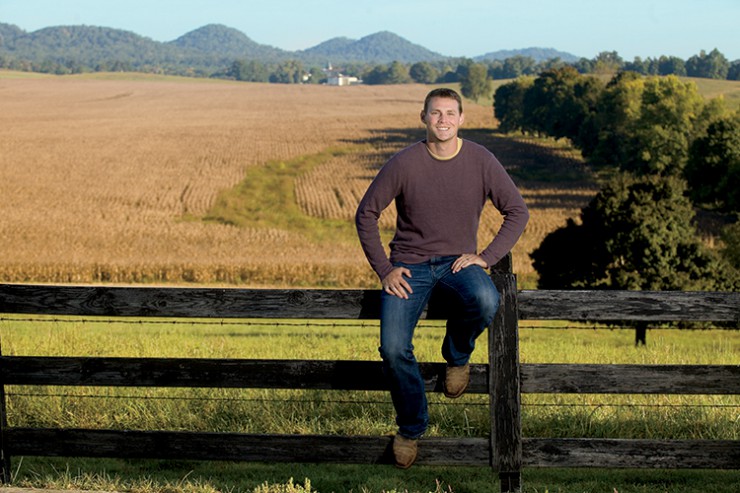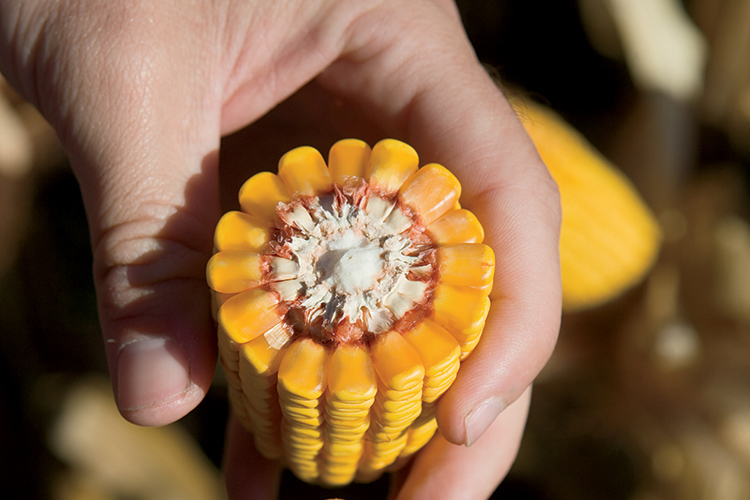Home > Kentucky > Kentucky Crops & Livestock > Kentucky Champions of Change
Kentucky Champions of Change

Variable-rate planting, highly accurate seed placement and instruments that improve seed-soil contact produce more corn with fewer resources for farmer Quint Pottinger.
Satellites communicate with the planter to eliminate over-planting, which improves yield and saves seed. All this technology, teamed with ever-improving seed and nutrient management strategies, makes Kentucky corn production more efficient and productive than ever.
“We’re 100 to 200 percent more efficient than we were when my grandfather farmed, from an environmental and production standpoint,” says Pottinger, a farmer in his 20s whose farming roots trace back 11 generations in the New Haven area. “We are producing more bushels to the acre today than we were when my dad started farming in 1970. We’re using less fertilizer and less chemicals, and we’re using our nitrogen more efficiently.”
Today’s young farmers bring innovation and efficiency to Kentucky corn, the state’s number one cash crop. In 2013, farmers grew the largest corn crop in Kentucky history at 243 million bushels, valued at more than $1.1 billion, according to the National Agricultural Statistics Service and the Kentucky Corn Growers Association.
“Because of conservation concerns, I think young farmers are very interested in using the latest technologies and research to ensure what they’re doing is going to be more environmentally and economically sustainable,” says Laura Knoth, executive director of the Kentucky Corn Growers Association.

Innovation At Work
These farmers also stay well connected to the industry through social media and other sources. They are educated with today’s tools. In classroom settings, they learn how to hedge risks in the futures market and more.
“I think perspective is the No. 1 driver for innovation, and without innovation, you can’t grow and can’t change,” Pottinger says. “Perspective about new markets, new agronomic techniques and marketing techniques is what young farmers are bringing back, and it’s making farms more efficient because of it.”
The Pottinger family farm, Affinity Farms, grows row crops and vegetables and sells precision farming products. Pottinger and his father grow corn in rotation on about 600 acres, a crop demanded by nearby distilleries like Jim Beam, Buffalo Trace and Barton.
The White House named Pottinger a Champion of Change in Agriculture in 2014. This award honors leaders nationwide who build the bench for the next generation of farming and ranching. Pottinger still sees the opportunity to learn and improve. “We need to push the envelope on corn and be more efficient and learn better ways to manage our soil health,” Pottinger says.

More Efficient Farming
Third-generation farmer Adam Bell credits grid soil sampling and variable-rate fertilizer application for improving soils on his western Kentucky farm.
While this variable-rate application practice may not yield financial savings, it improves fertilizer placement. Global-positioning satellites and computer-generated fertilizer application maps work in concert to apply various rates of fertilizer across a field. Quint Pottinger was named a White House Champion of Change in 2014.
“We’re getting the nutrient where it needs to be,” says Bell, who grows 1,000 acres of corn with his father.
The farm has become more efficient and resourceful as it evolves. The Bell family has adopted variable-rate application of lime and seed. They also use global-positioning satellites to communicate with planters and sprayers to avoid seed or herbicide overlap during field applications.
“Technology has brought us tons of tools we can use in our toolbox here on the farm,” Bell says.



